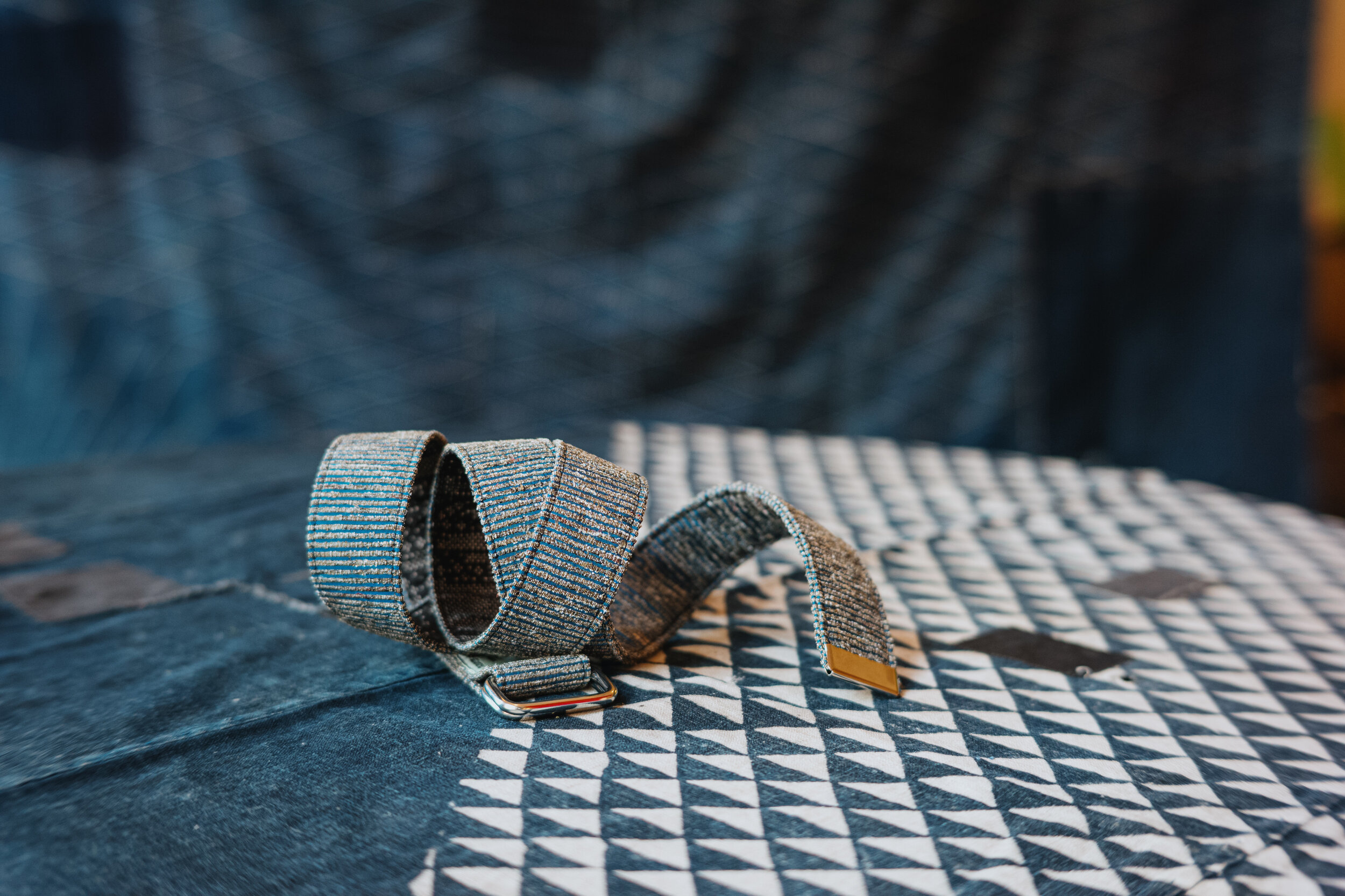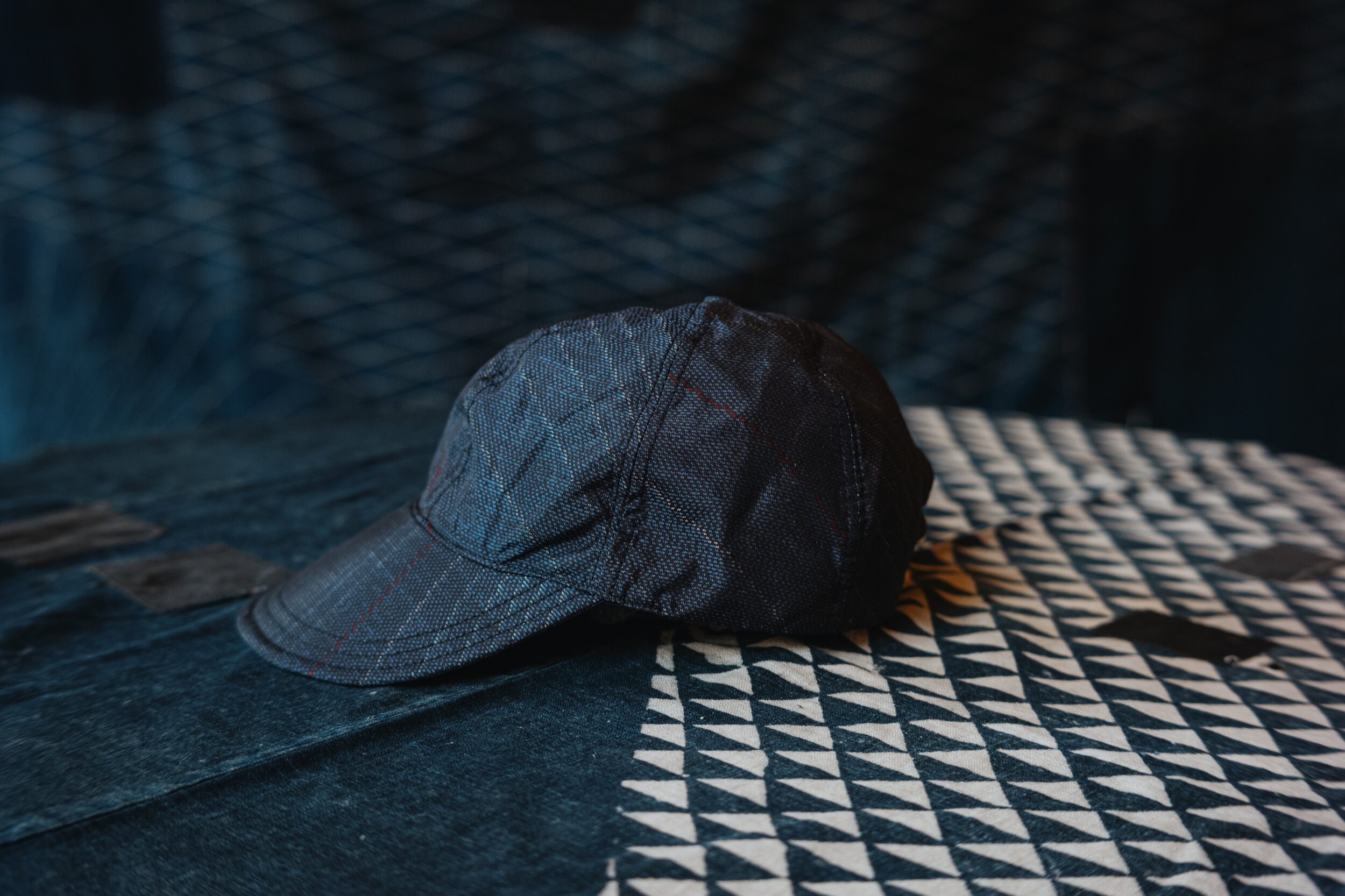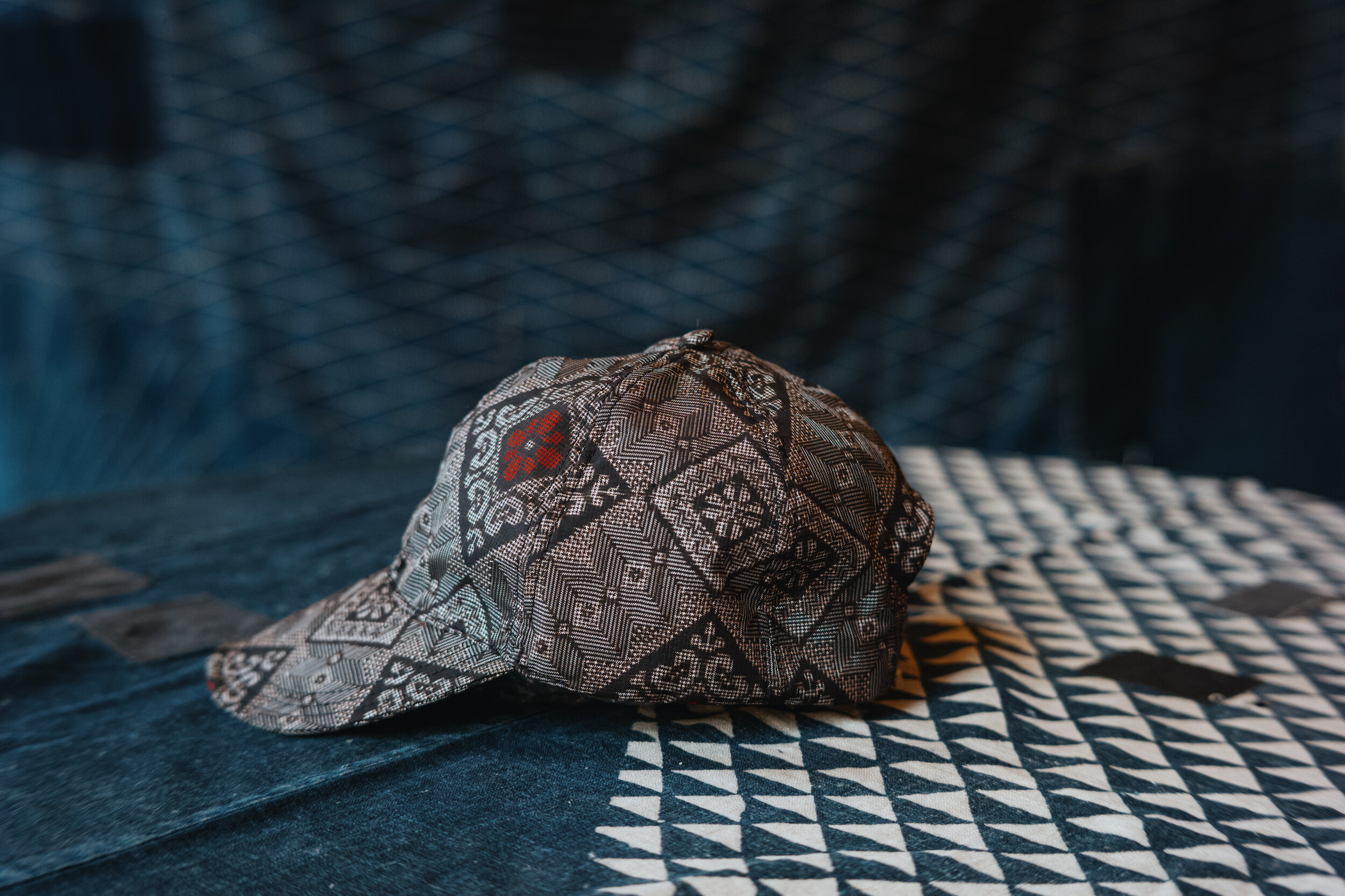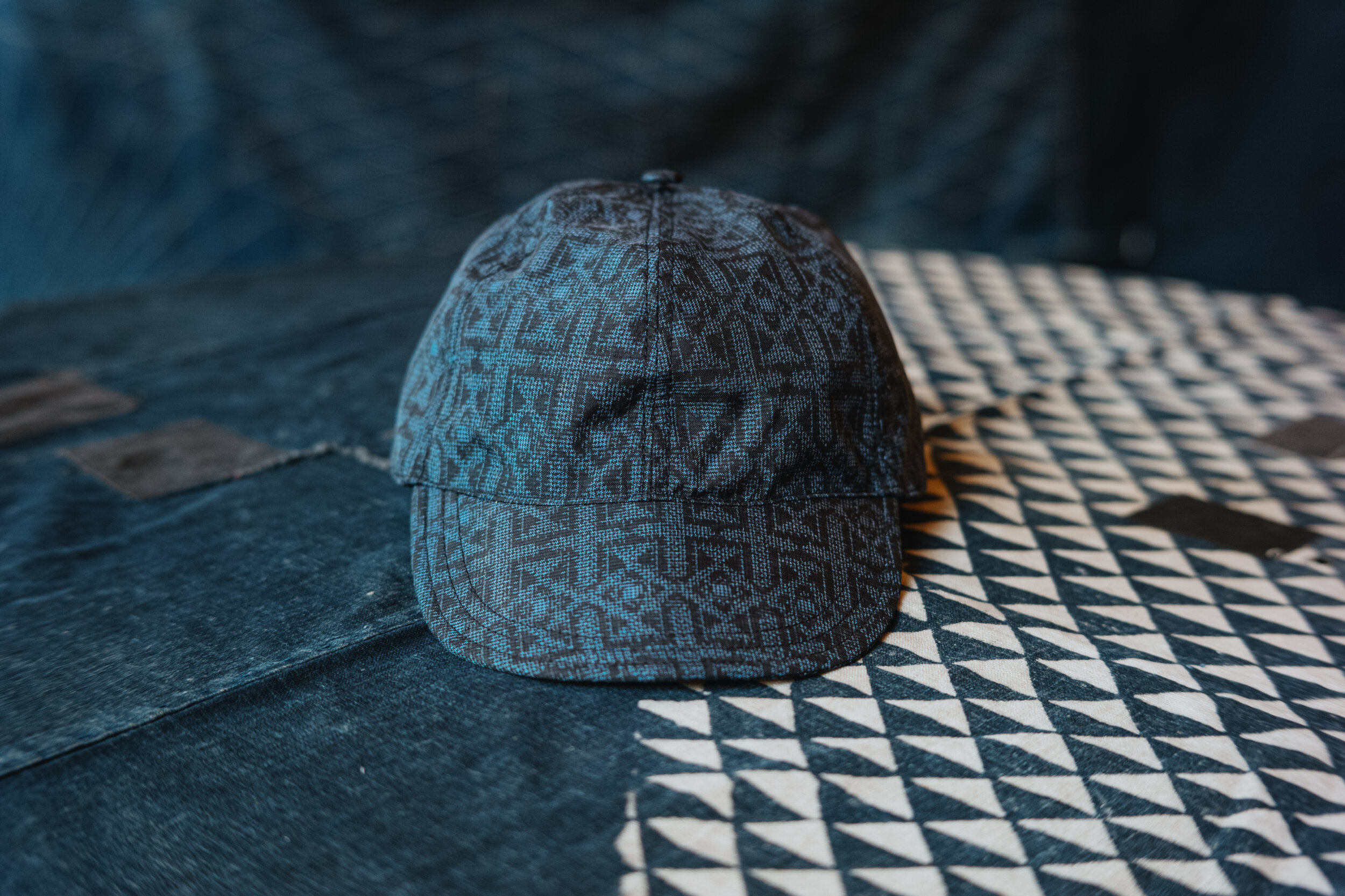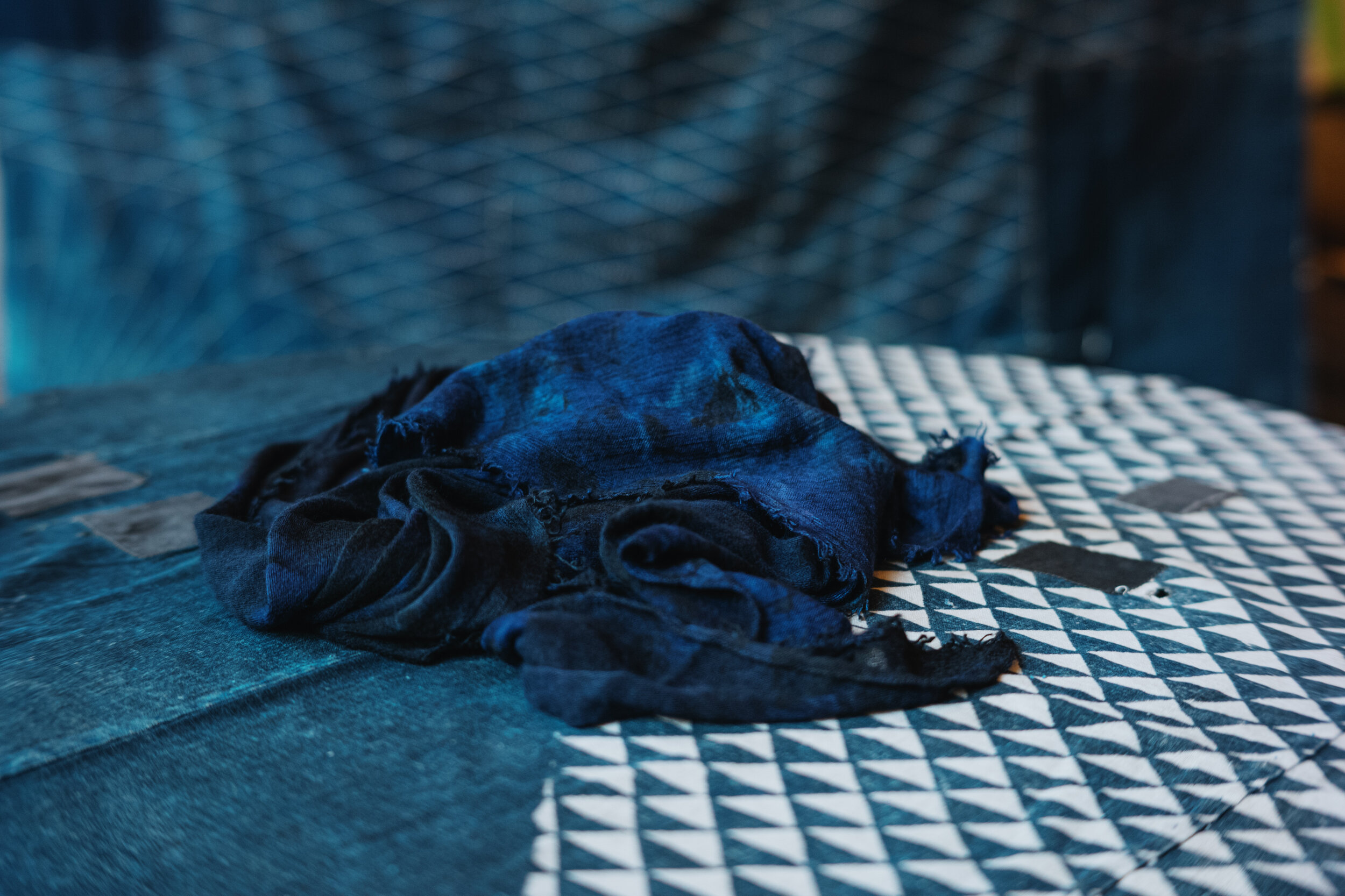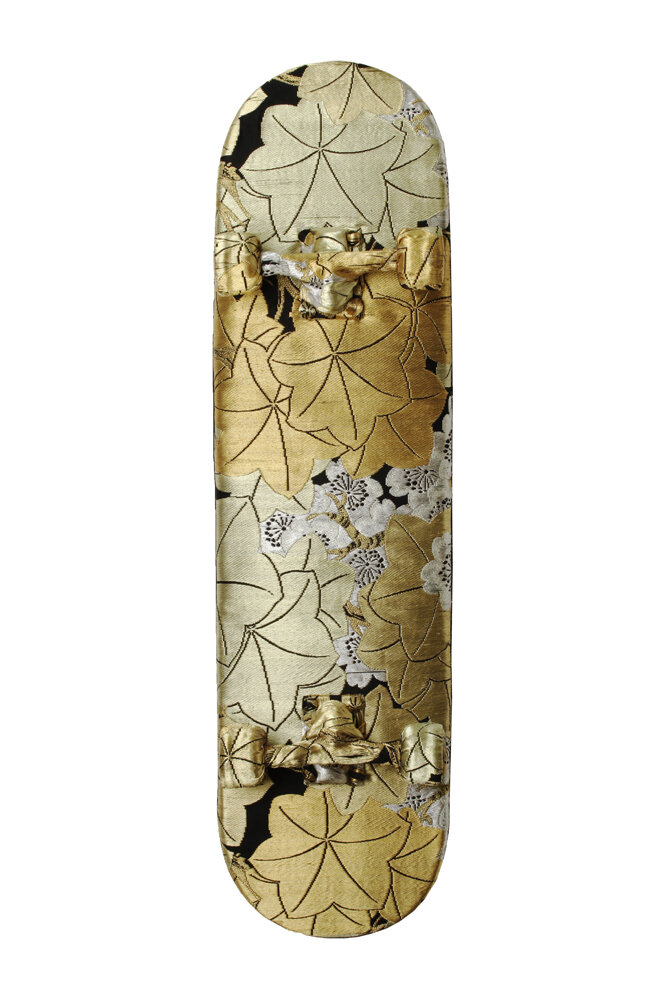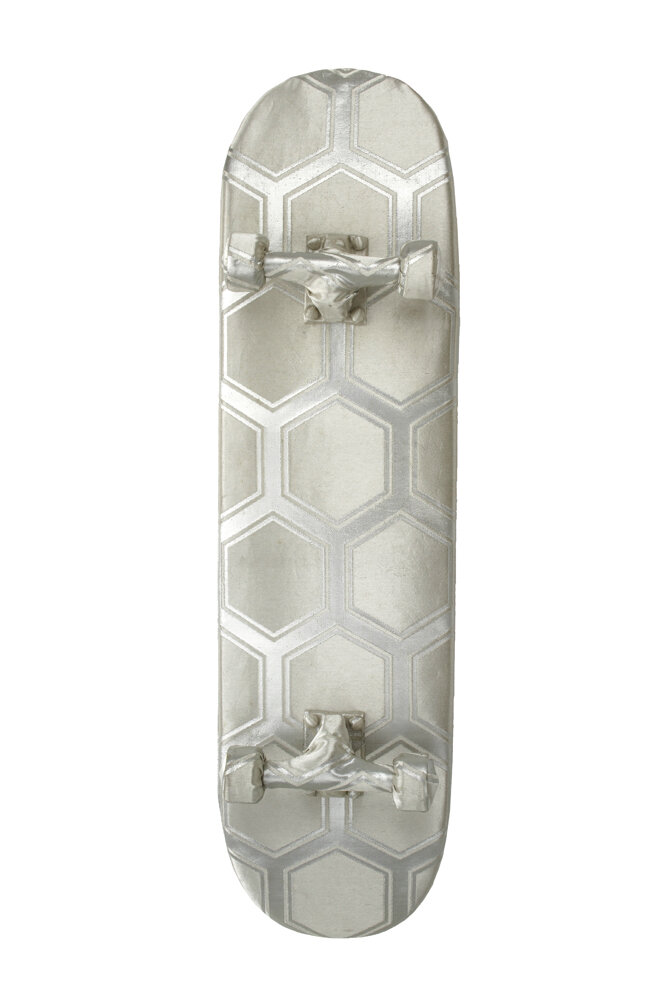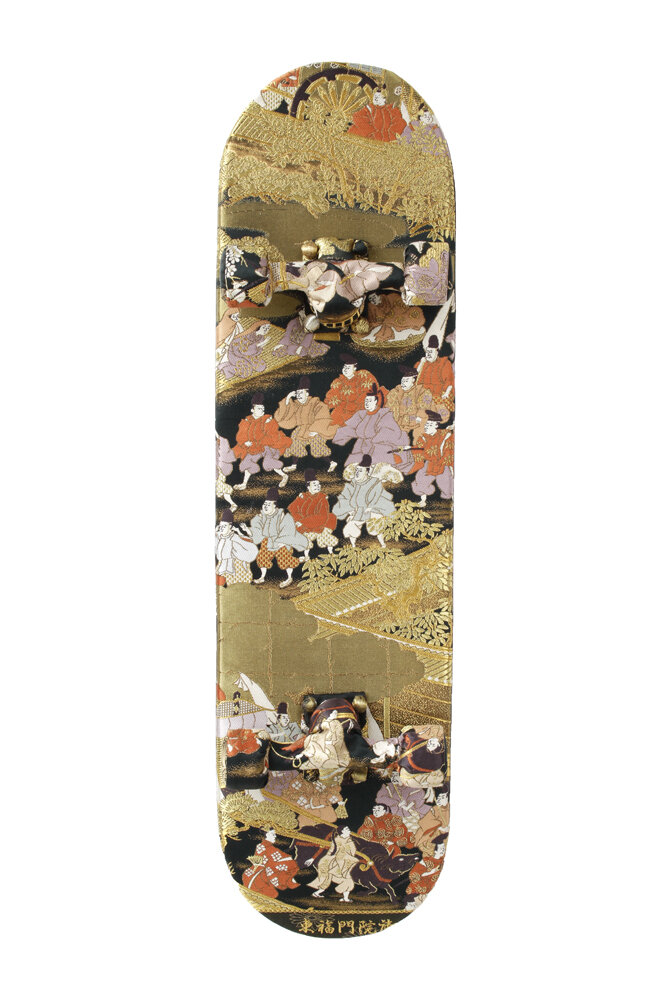Inside Omakase
For our third collection of limited edition gifts we collaborated with Japanese artisans to celebrate and share their integrity, attention to detail and expert craftsmanship.
Every Omakase includes these items
Vase by Nakagawa Mokkougei
Third generation woodworker Shuji Nakagawa at Nakagawa Mokkouegi in Shiga uses a 700-year-old technique called Ki-Oke, or bucket making. Today there just a few of these traditional artisans left. Unlike many of his peers Nakagawa also uses the technique to create modern objects. We asked him to create a vase with an organic shape, clearly part of a family but each unique. When he presented the stellar collection of thirty pieces he said the commission was the most challenging project he’s worked on.
Edition of 30 unique pieces
Tea Bowl and Cups by Asahiyaki
Asahiyaki is a 400+ year old family run ceramics company, currently led by Matsubayashi Housai, the family's 17th generation potter. Each year they dig up clay from the nearby moutain and cure it for 50-100 years. The clay used in this set was collected by Matsubayashi Housai's grandfather. The set contains four of the company's classic cups and a matcha bowl in exclusive, experimental colorways. The company produces fewer than 2,000 pieces of pottery per year, and our collection represents a good amount of that.
Edition of 30
Tea Caddy by Kaikado
Takahiro Yagi is the third generation to lead his family's unique business. Known for their hand-made tea canisters the world over, Kaikado’s simple design creates a vacuum seal when they gently close. We commissioned them to create this very unique finish using our original CH Omakase pattern, which represents the first time they were able to precisely match a hand-engraved pattern and then cover it in lacquer. The more you touch this object the more patina the lacquer will acquire. And of course it can be used for more than tea—coffee, pot, candy and more all will be quite happy inside.
Edition of 30
Tea Strainer by Kanaami Tsuji with handle by Nakagawa Mokkougei
Though Nakagawa Mokkouegi and Kanaami Tsuji are both part of the GO-ON collective and their leaders friends, they hadn't previously collaborated on a product before. We asked Nakagawa to create a wooden handle for Kanaami Tsuji's iconic tea strainer and couldn't be happier with the result.
Edition of 30
Tea Spoon by Nakagawa Mokkougei
Nakagawa rarely discards a piece of wood; rather he saves pieces that don't have an obvious use and keeps coming back to them until the wood tells him what it wants to be. Bent or knotted pieces often reveal themselves as perfect candidates for spoons. Your spoon is ideal for tea and other sensitive items.
Edition of 30 unique pieces
Incense by KIUN
Kiun has been making incense since 1872. We commissioned Kazushi Iwasa, the company's fifth generation incense maker, to create a unique incense for Omakase using natural indigo. The earthy, woody, musky scent is light and refreshing. And the incense will not not drop ash as it burns.
Edition of 400 boxes
Incense Plate by Taro Tabuchi
Taro Tabuchi is an acclaimed ceramicist working in Takamatsu. His passion is porcelain, which he fires in a hand-stoked wood fired kiln over three days. While many artists pursue perfection, especially when working in porcelain, Taro embraces the wabi-sabi effect of clay in this uneven heat which creates uneven coloring and scars from the hot ash. Each piece is truly unique and has its own character. Owning a piece of his work is an honor—he only makes a few hundred pieces a year by hand—and we felt it was the perfect companion for our Omakase edition incense. The incense curls into a solid piece of ash as it burns. Place the incense in the disc enclosed in the package, and the disc on the porcelain slab.
Edition of 30 unique pieces
Belt by Hajime Shoji
Tadaaki Hajime has followed in his family's tradition, hand weaving oshima tsumugi and sakiori on the island of Amami Oshima. Sakiori is an upcycled fabric, made from old kimono that are no longer worn (which are first unstitched into their original panels and then cut into very narrow strips) and woven into a new fabric. This creates very unique design which honors the original kimono's design and gives it a second life. We commissioned Hajime Shoji to create belts using their sakiori for the first time.
Edition of 30
Hat by Zillion
We commissioned David Guarino and Zillion to create baseball-style caps using Oshima tsumugi silk fabric, entirely created by hand in Amami Oshima, an island in Japan's most southern region near Okinowa. These fabrics require 130 steps and take up to 18 months to make. They are woven with only two threads, one warp and one weft, which have been meticulously hand coloured to create a "pixel" when they are aligned during weaving.
Edition of 35
Scarf by Grisal
Grisal makes knitware and owns their own mills in Wakayama where they have both antique and modern looms. These scarves are woven on their four very rare antique "slow knit" machines that have been adjusted to create the very fine cashmere for their scarves. It's on these machines that your Omakase edition scarf was woven, using Mongolian cashmere that was hand spun in Italy and hand dyed in Kyoto. It takes hours to weave enough of this single ply fabric for your scarf, which is then hand-finished. The hand feel is out-of-this-world and truly unique.
Edition of 30
Wallet by Postalco
We love Postalco's Farmer’s Felt wallet so much we wanted to make our own edition. This thick washi paper wallet ages over time and use, and the paper starts to feel like leather. This wallet has two compartments and closes with a snap. We love it for travel because it easily manages coins, business cards and receipts. It's hand made by Awagami Factory, one of the last washi manufacturers in Japan.
Edition of 150
Skateboards by Zillion
David Guarino is a French creative director and designer who has lived and worked in Japan for many years. One of his specialties is using vintage fabrics in unusual ways, often covering every day objects with them. A long-time collaborator of ours, we asked him to create a new edition of his vintage silk kimono fabric covered skateboards from his brand Zillion.
Edition of 30 unique pieces
Passport Case by Anson Calder and Sukumo Leather
The Salt Lake City brand creates beautiful leather goods of the highest quality, and we had the opporutnity to introduce them to some of our partners in Japan. The result is Anson Calder's first made-in-Japan product, a hand dyed indigo leather passport wallet. Anson Calder partnered with craftsman Makoto Horii and his company, Sukumo Leather along with master indigo dyer Naoyuki Asai to create this. This splattered indigo dye technique was created by Asai-san using tools he developed, and made from all natural indigo sukumo from one of Japan's six indigo farms.
Edition of 30 unique pieces

























